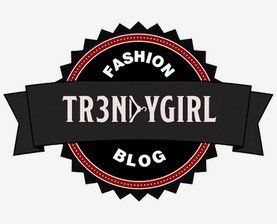We all have certain facial features that we are not so happy with, that we would deem our least favorite thing about our looks. Sometimes people will begin to consider different forms of plastic surgery to fix these facial features that we’re not so proud of. Plastic surgery is a great option to help people experience more self-confidence and to help themselves have more self-esteem about their looks.

Adjusting a Droopy Tip
Rhinoplasty, or a nose job, is a popular plastic surgery procedure that deals with reshaping the nose and the areas around the nose for a more pleasurable appearance. Different changes are made to the nose to make other facial features more visible and to place more attention on the other features. Changes to the nose can include adjusting a bump on the bridge of the nose, narrowing the tip of the nose, reshaping the tip of the nose completely, and possibly narrowing the bridge of the nose in general. The result of this procedure would be to make the nose more appealing and to give the other facial features a chance to appear attractive.
Your Consultation
Once you decide that you would like to have a rhinoplasty surgery, it’s time to get in touch with your plastic surgeon for a consultation. During the consultation, the surgeon will describe to you in detail all of the points of the surgery and answer any questions that you may have. During the consultation, the surgeon is also looking for any changes that you would like him or her to try to achieve on your new nose. The surgeon has a conversation with you to try to fully understand why you would like the rhinoplasty and to understand exactly the areas that you would like to have fixed.
After the surgeon has a complete understanding of how you would like your new nose to look, he or she can then talk to you about what would be considered realistic options for your rhinoplasty and what you can expect the outcome of your procedure to be. In recent years, 3-D imaging has become available to help plastic surgeons be able to show patients what their new nose and upper lip area will look like before the surgery even begins. This is a great way to make any other adjustments to the surgery plans before you actually go under the knife. In our office, we use two different imaging systems, the Canfield mirror imaging system and the 3-D Vectra program. This is a great way to make sure that the goals of the patient and the goals of the surgeon are aligned for the surgery to progress.
Rhinoplasty Preparations
After the consultation, the surgeon will schedule a pre-operative appointment. At this appointment, you will meet the different people that will be assisting the surgeon during your surgery. The team will go over any postoperative things that you will need to understand so that you can prepare for it beforehand. This will also be the last chance that you will have to make sure that your goals are aligned with the surgeon’s goals. Prior to your surgery, you will be asked to avoid taking blood thinning medicines such as Advil, Motrin, or any other medicines that contain aspirin. The team will also ask that you avoid taking any supplements as well. You will also be instructed to place a prescription antibiotic topical ointment around your nostrils one week before the surgery and one week after the surgery. You will then be instructed on taking any other medications that will be given after the surgery.
The Rhinoplasty Procedure
There are two different techniques for rhinoplasty, the open approach or the closed or endonasal approach. At our office, we almost always perform the procedure with the open approach. With this approach, there are two incisions on the inside of the nostrils and another incision on the outside hidden inside of the skin in between the nostrils. This technique provides a better visualization of your nasal structure and helps to more effectively reshape the nose.
When the patient would like the nasal tip to be fixed, there is a certain process that goes along with the reshaping. For a droopy tip, the surgeon needs to be able to reshape the cartilage in the nose. This requires the surgeon to use a technique called cartilage grafting, which basically means taking cartilage from a different spot on the patients’ face and adding that cartilage to the nose to make the tip of the nose more defined so that they upper lip is more visible and more attractive.
The rhinoplasty can be performed at one or three different locations. These options include the accredited on-site surgical suite, an outpatient surgery center, or at Robert Wood Johnson University Hospital. The location is determined by several different factors of your surgery. The type of anesthesia that is being used during surgery, or whether breathing issues needing to be addressed are just two of these determining factors. This surgery is usually done either under general anesthesia, in which you will be at the outpatient surgery center or hospital, or under IV sedation, in which the patient can go to either of the three choices. Usually age is another determining factor for the surgery location.
The surgery usually lasts about three to four hours. After the surgery, the patient is required to stay in recovery for at least two hours for observation, although this time period is shorter for those that choose to do IV sedation. Patients’ will definitely need to have someone stay with them the night that they come home from the surgery and the very next day.
Rhinoplasty Recovery
During the recovery process, you will need to wear a small metal splint on the bridge of the nose. There is a small gauze that is attached the nostrils to catch anything as needed. The gauze are lovingly referred to as the “drip pad.” These can be changed out as needed, but after 48 hours, most patients are at the point where their drip pads does not need to be replaced. Six to seven days after the surgery, the patient comes in for a checkup and has everything removed – the tape, splint, and sutures. After the bandage is removed, you will be able to wear makeup again.
Directly following the surgery, there is always a possibly for bruising and swelling. This usually lasts for seven to ten days, with the swelling going down closer to the tenth day. The nose may also appear somewhat wider because of the swelling as well. Most patients will go back to work after seven to ten days, however this is a guess of a timeframe. Patients will have to come in for a few postoperative checkups but after three weeks, you should be able to return to full activity.
Meet The Glasgold Group
The Glasgold Group is a group of plastic surgeons made up Dr. Mark Glasgold, Dr. Robert Glasgold, and Dr. Joelle Rogal. Their main goal is their patients’ satisfaction. They are more than willing to work with the patient to get the best procedure available for them as well. Come in and visit the Glasgold Group today and schedule your consultation.

Great information. Thanks for this. I always imagine that rhinoplasty would be so painful but I may be wrong.
https://www.fashionablyidu.com/
cool tips my dear :)
Wow! This is a cool post, dear! xoxo
Hello, thanks for the information. Have a nice day
Pretty cool how you described it all clearly. I loved your selection. Have a great day!
Per fortuna il naso non è un problema per me, ma i consigli che hai proposto sono davvero utili e sensati!
Baci!
S
https://s-fashion-avenue.blogspot.com